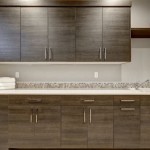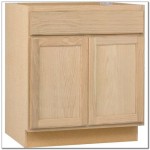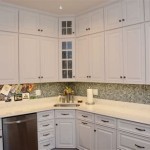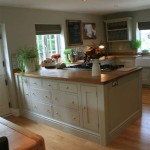What Colour Paint Goes With Sage Green Kitchen Units?
Sage green kitchen units offer a tranquil and sophisticated aesthetic, bringing a touch of nature indoors. However, selecting the right paint colour to complement these units is crucial for achieving a harmonious and visually appealing space. The choice of paint colour can significantly influence the overall mood, brightness, and perceived size of the kitchen. Understanding the undertones of the sage green units, along with considering the available natural light and the desired style, are key factors in making the optimal selection.
The success of any colour pairing lies in its ability to balance and enhance the existing features of the kitchen. Sage green, often described as a muted, grey-green, can possess cool or warm undertones depending on its specific formulation. Before committing to a paint colour, it is essential to identify these undertones. Examining the units under different lighting conditions, both natural and artificial, can help reveal whether the green leans towards a more blue-grey or yellow-grey hue. This knowledge will then guide the selection of complementary or contrasting paints.
Furthermore, the size and layout of the kitchen should also influence the paint colour decision. Smaller kitchens typically benefit from lighter, brighter colours that reflect light and create an illusion of spaciousness. Conversely, larger kitchens can accommodate darker, richer tones that add depth and drama. However, even in larger kitchens, it is vital to maintain a balance to avoid overwhelming the space.
The following sections will explore various paint colours that harmonize well with sage green kitchen units, categorized by their effect and overall style.
Understanding Neutral Paint Options
Neutral paint colours offer versatility and a timeless appeal, making them a popular choice for kitchens. When paired with sage green units, neutrals create a calming and balanced atmosphere. However, not all neutrals are created equal, and the specific shade needs to be carefully considered to ensure it complements the green tones.
Off-White and Cream: Off-white and cream colours provide a soft and airy backdrop for sage green units. These shades reflect light effectively, making them ideal for smaller kitchens or spaces with limited natural light. Cream colours, with their slightly warmer undertones, can create a cozy and inviting ambiance, while off-whites offer a cleaner, more modern feel. When selecting an off-white or cream, pay attention to its undertones. A cream with yellow undertones will pair well with a sage green that also has warm undertones, ensuring a cohesive look. Conversely, a cooler off-white with grey or blue undertones can complement a sage green with cooler undertones. Avoid stark white, as it can create too much contrast and make the sage green appear dull or washed out.
Greys: Grey is another versatile neutral that can work beautifully with sage green. However, the key is to choose the right shade of grey. Light to mid-tone greys with subtle warm undertones, such as greige (a blend of grey and beige), can create a sophisticated and harmonious look. These warm greys help to soften the coolness of the sage green and add a touch of warmth to the kitchen. Avoid cool, steely greys, as they can clash with the green and create a cold and sterile atmosphere. The specific shade of grey should also be chosen to complement the existing hardware and accessories in the kitchen. Brushed gold or copper hardware, for example, pair well with warm greys, while stainless steel or chrome hardware can work effectively with cooler greys, although it's generally preferable to steer clear of the latter with sage green.
Beige and Taupe: Beige and taupe offer a more grounded and earthy feel compared to white or grey. These colours provide a neutral backdrop while adding warmth and depth to the kitchen. Taupe, in particular, with its subtle grey-brown undertones, can complement sage green units beautifully, creating a sophisticated and inviting space. Like with greys, consider the undertones of the beige or taupe. A beige with pink or peach undertones can clash with the green, while a beige with yellow or grey undertones will create a more harmonious effect. These colours work well in kitchens with natural wood accents or flooring, enhancing the overall warmth and natural feel.
Exploring Complementary Colour Options
While neutral colours are a safe and reliable choice, incorporating complementary colours can add personality and visual interest to a kitchen with sage green units. Complementary colours are those that sit opposite each other on the colour wheel, creating a vibrant and balanced contrast. For sage green, its complementary colours typically fall within the red and orange spectrum.
Terra Cotta and Warm Reds: Terra cotta, with its earthy orange-red hue, provides a warm and inviting contrast to sage green. This combination evokes a sense of rustic charm and works particularly well in kitchens with a Mediterranean or farmhouse style. However, it is important to use terra cotta sparingly, as it can be quite intense. Consider using it as an accent colour on a feature wall or for kitchen accessories, rather than painting the entire room. Warm reds, with their rich and vibrant tones, can also complement sage green, but they require careful consideration. A muted, earthy red, such as brick red or a deep clay red, can create a sophisticated and dramatic effect. Avoid bright, primary reds, as they can overpower the green and create a jarring contrast.
Peach and Coral: Peach and coral offer a softer and more subtle alternative to terra cotta and red. These colours bring warmth and vibrancy to the kitchen while maintaining a sense of tranquility. Peach, with its delicate orange-pink hue, creates a cheerful and inviting atmosphere. Coral, with its slightly more intense orange-red tones, adds a touch of sophistication and energy. These colours work well in kitchens with light-coloured countertops and flooring, enhancing the overall brightness and airiness. When using peach or coral, consider using them as accent colours or painting only a portion of the walls to avoid overwhelming the space.
Mustard Yellow and Gold: Mustard yellow and gold provide a warm and luxurious contrast to sage green. These colours add a touch of elegance and sophistication to the kitchen, creating a rich and inviting atmosphere. Mustard yellow, with its muted, earthy tones, complements the green beautifully, creating a harmonious and balanced look. Gold, with its shimmering and opulent hue, adds a touch of glamour and works well as an accent colour. Consider using gold hardware or accessories to enhance the overall luxurious feel. These colours work well in kitchens with dark countertops and flooring, creating a dramatic and sophisticated contrast.
Considering Monochromatic and Analogous Colour Schemes
For a more subtle and harmonious look, consider using a monochromatic or analogous colour scheme. A monochromatic scheme involves using different shades and tints of the same colour, creating a cohesive and sophisticated appearance. An analogous scheme involves using colours that are adjacent to each other on the colour wheel, resulting in a harmonious and balanced effect.
Different Shades of Green: Using different shades of green can create a tranquil and sophisticated atmosphere in a kitchen with sage green units. Consider painting the walls a lighter shade of green, such as a pale mint or a soft spring green, to create a sense of spaciousness and airiness. This creates a subtle contrast with the sage green units while maintaining a cohesive and harmonious look. You can also incorporate darker shades of green, such as forest green or emerald green, as accent colours to add depth and visual interest to the kitchen. For instance, a darker green backsplash or accent wall can complement the sage green units and create a focal point in the room.
Blues and Blue-Greens: Blue and blue-green shades are analogous to green and can create a calming and harmonious effect in a kitchen. A soft, muted blue or a seafoam green can complement the sage green units beautifully, creating a serene and inviting atmosphere. These colours work particularly well in kitchens with coastal or Scandinavian-inspired designs. Consider using lighter shades of blue or blue-green to maximize the sense of spaciousness and airiness. You can also incorporate darker shades as accent colours to add depth and visual interest.
Yellow-Greens and Olive Greens: Yellow-greens and olive greens, being adjacent to sage green on the colour wheel, create a sophisticated and natural look. Olive green offers a deeper, more earthy tone that can create a sense of warmth and sophistication against the sage green units. Yellow-greens provide a lighter, more vibrant contrast, bringing a sense of energy to the space. These colours can be used on walls, backsplashes, or even as accent pieces to deepen the overall green theme of the kitchen. The key is to balance the deeper tones with the lighter ones to maintain an open and inviting feel.

Sage Green Kitchen Ideas Guide Kettle Co

15 Sage Green Kitchen Ideas That Are Trendy Yet Timeless Kolo

How To Design A Sage Green Kitchen Wren Kitchens

40 Sage Green Kitchen Cabinets With Paint Colors Jenna Sue Design

40 Sage Green Kitchen Cabinets With Paint Colors Jenna Sue Design

7 Vibrant Green Kitchen Cabinets Ideas Paint Colors

24 Ideas For Sage Coloured Kitchens Houzz Ie

Designhomes Pics Green Kitchen Walls Paint For Sage

20 Sage Green Kitchen Ideas Room Colors

14 Green Kitchen Cabinet Ideas 2024 Top Paint Colors For Kitchens
Related Posts








